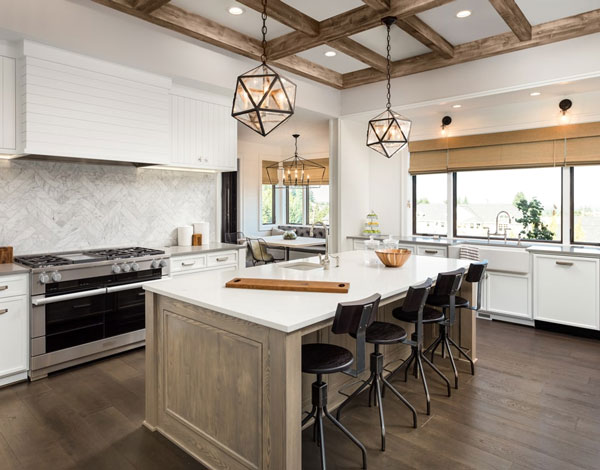|
|
A Comprehensive Guide to Kitchen Remodeling: From Concepts to Contractors
|
Article Intro
Kitchen remodeling is an exciting venture that can transform the heart of your home into a functional and aesthetically pleasing space. Whether you're looking to enhance functionality, update the design, or increase the resale value of your property, understanding the basics of kitchen remodeling is crucial. In this article, we will explore the concept of kitchen remodeling, various approaches to achieve your dream kitchen, essential considerations before starting the project, and tips on finding the right contractor.
|
1. What is Kitchen Remodeling?Kitchen remodeling involves the redesign and renovation of the kitchen space to improve its functionality, aesthetics, and overall value. It can range from simple cosmetic upgrades to a complete overhaul, depending on your goals and budget. Common elements addressed in a kitchen remodel include cabinets, countertops, appliances, flooring, lighting, and layout. Let's look at the key steps based on materials from a company engaged in kitchen remodel Fort Collins, Northern Colorado, United States. They have been known as a professional contractor in their area for years and their website is a valuable source of information any home owner would need to look at before starting the renovation process.[nbr][nbr]2. Approaches to Remodeling a Kitchen- a. Cosmetic Upgrades: If your kitchen layout works well but looks outdated, cosmetic upgrades may be sufficient. This includes painting cabinets, replacing hardware, upgrading lighting fixtures, and installing new countertops or backsplashes.
- b. Partial Renovation: A partial renovation involves changing specific elements of the kitchen, such as updating appliances, replacing cabinets, or installing a new island. This approach allows for a significant transformation without a complete overhaul.
- c. Full-scale Remodel: For a complete transformation, a full-scale remodel may be necessary. This approach involves changing the entire layout, replacing all major components, and reimagining the overall design of the kitchen. It offers the most comprehensive results but comes with a higher investment.
[nbr][nbr]3. What Should Be Known Before Starting a Kitchen Remodeling Project- a. Budget: Determine your budget before starting the project. This will guide your choices and help you prioritize what aspects of the kitchen are most important to you.
- b. Functional Needs: Assess your functional needs. Consider how you use the kitchen and what improvements would enhance its efficiency. This could involve optimizing storage, improving workflow, or creating additional counter space.
- c. Design Style: Define your design style to ensure a cohesive look. Whether it's modern, traditional, or eclectic, having a clear vision will guide material and color choices throughout the remodeling process.
- d. Permits and Regulations: Check local building codes and regulations. Some renovations may require permits, and understanding these requirements beforehand will prevent delays and issues during the project.[nbr][nbr]
4. How to Find a Contractor to Do It- a. Recommendations: Seek recommendations from friends, family, or neighbors who have undergone successful kitchen remodels. Personal referrals provide valuable insights into a contractor's reliability and work quality.
- b. Online Reviews: Utilize online platforms to read reviews and testimonials from previous clients. Websites like Yelp, Angie's List, and Houzz can offer a comprehensive overview of a contractor's reputation.
- c. Licensing and Insurance: Ensure that the contractor is licensed and insured. This safeguards you from potential liabilities and ensures that the contractor meets industry standards.
- d. Portfolio and References: Review the contractor's portfolio to assess their previous work. Additionally, ask for references to directly inquire about clients' experiences and satisfaction with the contractor's services.[nbr][nbr]
BottomlineEmbarking on a kitchen remodeling project requires careful planning and consideration. From choosing the right approach to finding a reliable contractor, understanding these key aspects will contribute to a successful and satisfying kitchen transformation. By investing time in the planning stages, you can create a space that not only meets your functional needs but also reflects your style and enhances the overall value of your home.
 |
| Kitchen Remodeling. Image from jacquesfamilyconstruction.com |
|
|
|
| | | |